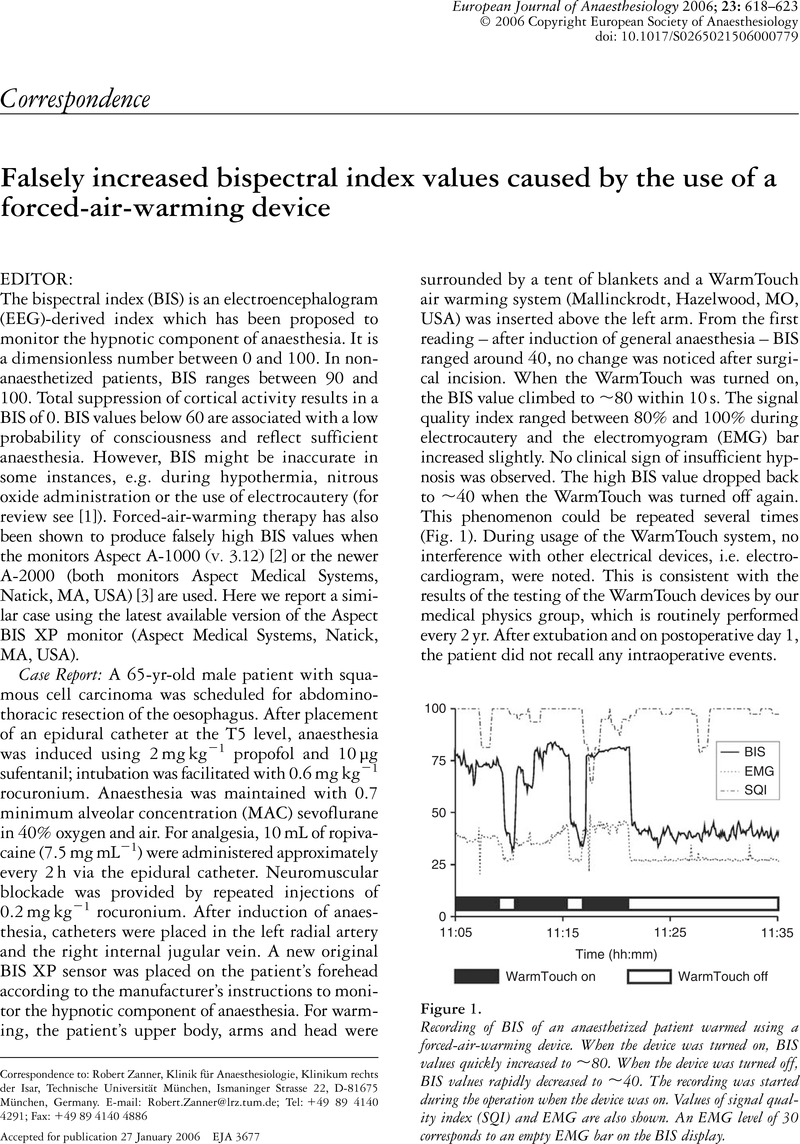Crossref Citations
This article has been cited by the following publications. This list is generated based on data provided by Crossref.
Hemmerling, T.M.
Charabati, S.
and
Bracco, D.
2008.
Unusual case of low bispectral index values due to electrocardiographic interferences.
British Journal of Anaesthesia,
Vol. 101,
Issue. 6,
p.
877.
Lobo, Francisco A.
and
Schraag, Stefan
2011.
Limitations of anaesthesia depth monitoring.
Current Opinion in Anaesthesiology,
Vol. 24,
Issue. 6,
p.
657.
Young, G. Bryan
2014.
BIS after cardiac arrest: Do pros outweigh the cons?.
Resuscitation,
Vol. 85,
Issue. 8,
p.
977.





